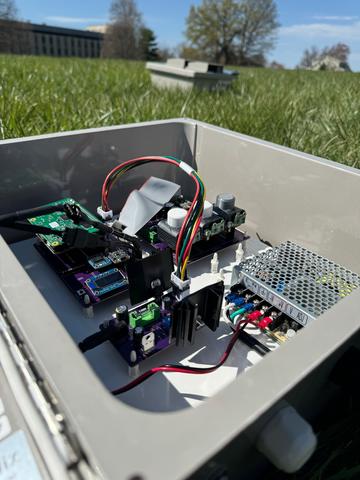
Depending on where you were during the solar eclipse, you may have been able to witness something that only happens every so often. At our Gaithersburg, Maryland, campus, a few NIST researchers watched the solar event with science on their minds.
During the day, plants undergo photosynthesis, during which they absorb sunlight and carbon dioxide, or CO2, to create food and energy, lowering CO2 concentrations in the local atmosphere. Researchers were curious as to whether their sensors would detect any changes to the concentration of CO2 during an eclipse.
To investigate, they used two different types of sensors.
Their low-cost sensor platform (shown here) is made up of three commercially available sensors — originally used to measure indoor air quality — and a single-board computer, which serves as the brains of the device. The platform works alongside reference gases with known concentrations and compares its CO2 measurements against them.
The second type of sensor can detect CO2 measurements with a very high precision of 0.1 parts per million.
Did they notice a difference in CO2 levels? The simple answer is yes. Researchers ran a brief analysis and found that exactly on the dot at 3:20 PM, which was the height of the solar eclipse in Gaithersburg, the CO2 concentrations spiked a little bit. All three low-cost sensors and the high-cost sensor were able to detect the small change.
As for what this means, further analysis is needed — so stay tuned for results!
Follow us on social media for more like this from all across NIST!

